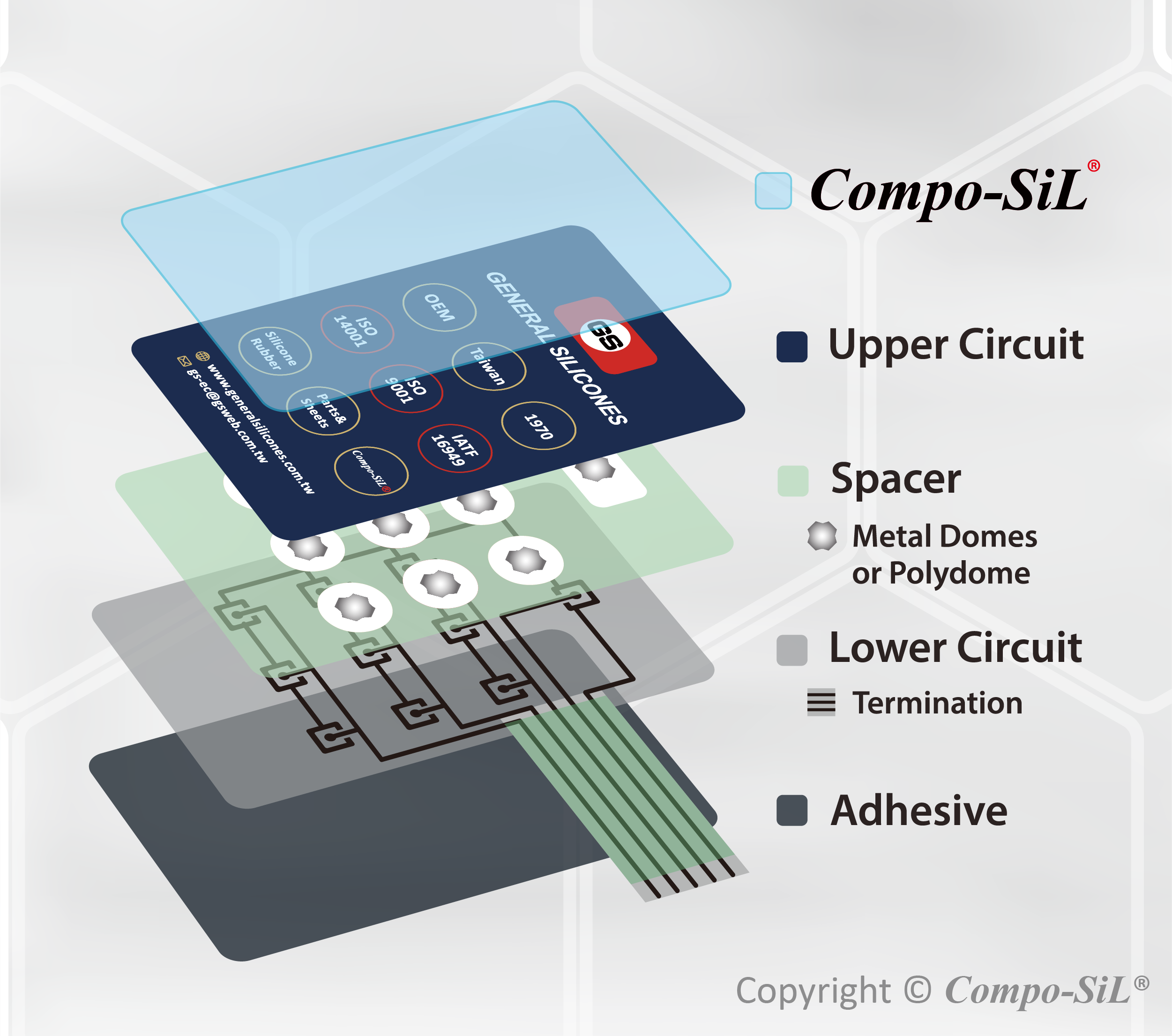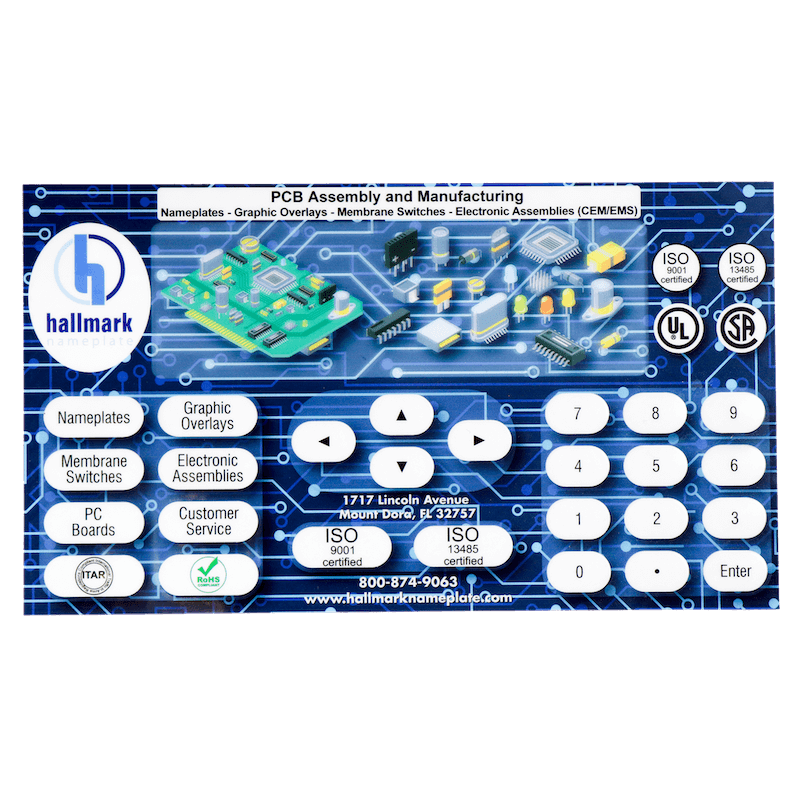Understanding the Relevance of Membrane Switches in Interface
Membrane switches are indispensable elements in the design of reliable interface, promoting not only functionality yet likewise enhancing visual appeal and customer interaction. Their one-of-a-kind functions, such as resistance to adjustable designs and ecological aspects, make them appropriate for a varied range of applications across numerous markets. As we discover the different advantages and future patterns connected with Membrane innovation, it becomes clear that these buttons are greater than simply parts; they represent a merging of advancement and practicality. The effects of this technology on individual experience are worth taking a look at even more.
What Are Membrane Buttons?

The spacer layer, which includes adhesive residential or commercial properties, allows for the separation of the circuit layer from the overlay, making certain that the button stays in a non-activated state until pushed. When stress is applied to the overlay, it presses the spacer layer, linking the space and completing the circuit in the underlying layer. This layout not only decreases the physical room needed for conventional mechanical switches yet likewise enhances the resilience of the device, as Membrane buttons are normally resistant to dirt, wetness, and various other ecological elements.
Frequently found in applications varying from customer electronics to clinical gadgets, Membrane switches are integral to modern-day technology, giving a easy to use and efficient user interface that aligns with modern design demands.
Advantages of Membrane Buttons
While various button technologies exist, Membrane Switches offer unique advantages that make them especially preferable in various applications. Among the primary benefits of Membrane switches is their portable design, which permits space-saving executions in devices where realty is limited. Their slim profile not only boosts aesthetic charm yet also assists in light-weight construction.
One more substantial advantage is their resistance to environmental aspects. Membrane buttons are usually sealed against wetness, dirt, and pollutants, making them suitable for use popular settings, such as medical gadgets and commercial tools. This toughness expands the lifespan of the switch, decreasing upkeep prices and boosting reliability.
Additionally, Membrane buttons can be tailored to meet particular design demands, integrating special graphics and shades that boost customer communication. Their responsive responses alternatives can additionally be customized to give a satisfying user experience. Additionally, Membrane buttons are cost-efficient, particularly in high-volume applications, as they can be produced efficiently.
Applications in Numerous Industries

In the consumer electronics market, Membrane buttons are common in devices such as microwaves, cleaning devices, and remote controls. Their responsive feedback and visual choices boost individual experience while providing a streamlined, modern appearance. Furthermore, auto makers utilize Membrane switches in control panel browse around these guys controls and infotainment systems, where area is limited, and individual engagement is important.
Furthermore, the commercial industry leverages Membrane switches in control panels for equipment and tools, enabling for instinctive operation in commonly severe settings. Their resistance to chemicals and wetness ensures durability and integrity in these applications. Overall, the flexibility of Membrane Switches contributes substantially to their widespread use, making them crucial in various technological domain names.
Layout Considerations for Membrane Buttons

When making Membrane switches, several essential considerations need to be thought about to ensure optimal performance and individual experience. Firstly, the option of products is important; picking sturdy, top quality substrates can enhance the switch's longevity and resistance to environmental factors such as moisture and temperature fluctuations.
Secondly, the design of the visuals overlay must focus on clearness and ease of use. Icons and message need to be readable, and the design ought to facilitate intuitive communication (membrane switches). Furthermore, tactile feedback is essential; including a responsive dome or other mechanisms can boost the customer experience by supplying physical confirmation of activation
Another important variable is the switch's electrical performance. Developers have to guarantee that the conductive traces are correctly designed to decrease resistance and stay clear of signal disturbance. This involves assessing the required actuation pressure and making sure compatibility with the electronic components they will certainly interface with.

Future Trends in Membrane Technology
As innovation continues to development, Membrane switches are positioned to evolve dramatically, view publisher site driven by developments in products and manufacturing methods. One arising pattern is the unification of sophisticated products, such as conductive inks and versatile substratums, which boost sturdiness and lower the general weight of Membrane buttons. These materials not only improve the responsive feedback however additionally permit the layout of buttons that can endure harsher ecological problems.
Additionally, the assimilation of touch-sensitive modern technologies is transforming typical Membrane Switches right into even more interactive user interfaces. Capacitive touch sensors embedded within Membrane button panels can give a more responsive and instinctive user experience, lining up with the expanding need for sleek, modern designs in consumer electronics.
Additionally, developments in printing techniques, such as digital and 3D printing, enable fast prototyping and personalization of Membrane switches. This flexibility allows producers to respond faster to market demands and consumer choices.
Last but not least, sustainability is coming to be a substantial focus, with producers checking out environment-friendly materials and processes. As these trends unravel, the future of Membrane innovation guarantees enhanced functionality, visual appeal, and ecological duty, strengthening their function in advanced interface throughout different markets.
Conclusion
In conclusion, Membrane Switches represent an essential element in the style of user interfaces, incorporating performance with aesthetic adaptability. Their benefits, including durability and resistance to ecological aspects, make them suitable for varied applications across various sectors. Thoughtful design factors to consider enhance customer interaction and experience. As advancements in modern technology continue, the click for more advancement of Membrane buttons is expected to further fine-tune interface, driving innovation and boosting usability in a significantly complex technical landscape.
Membrane buttons are essential parts in the style of reliable user interfaces, assisting in not only functionality yet likewise boosting visual appeal and customer communication.Membrane Switches offer as an essential element in numerous customer interfaces, helping with a seamless communication in between users and electronic gadgets.While countless button technologies exist, Membrane Switches offer distinctive benefits that make them particularly desirable in different applications.In addition, Membrane buttons can be customized to satisfy particular style demands, including one-of-a-kind graphics and colors that boost customer interaction.In conclusion, Membrane Switches stand for a crucial part in the style of individual interfaces, integrating performance with aesthetic versatility.
Comments on “The Benefits of Using Membrane Switches in Modern Electronics”